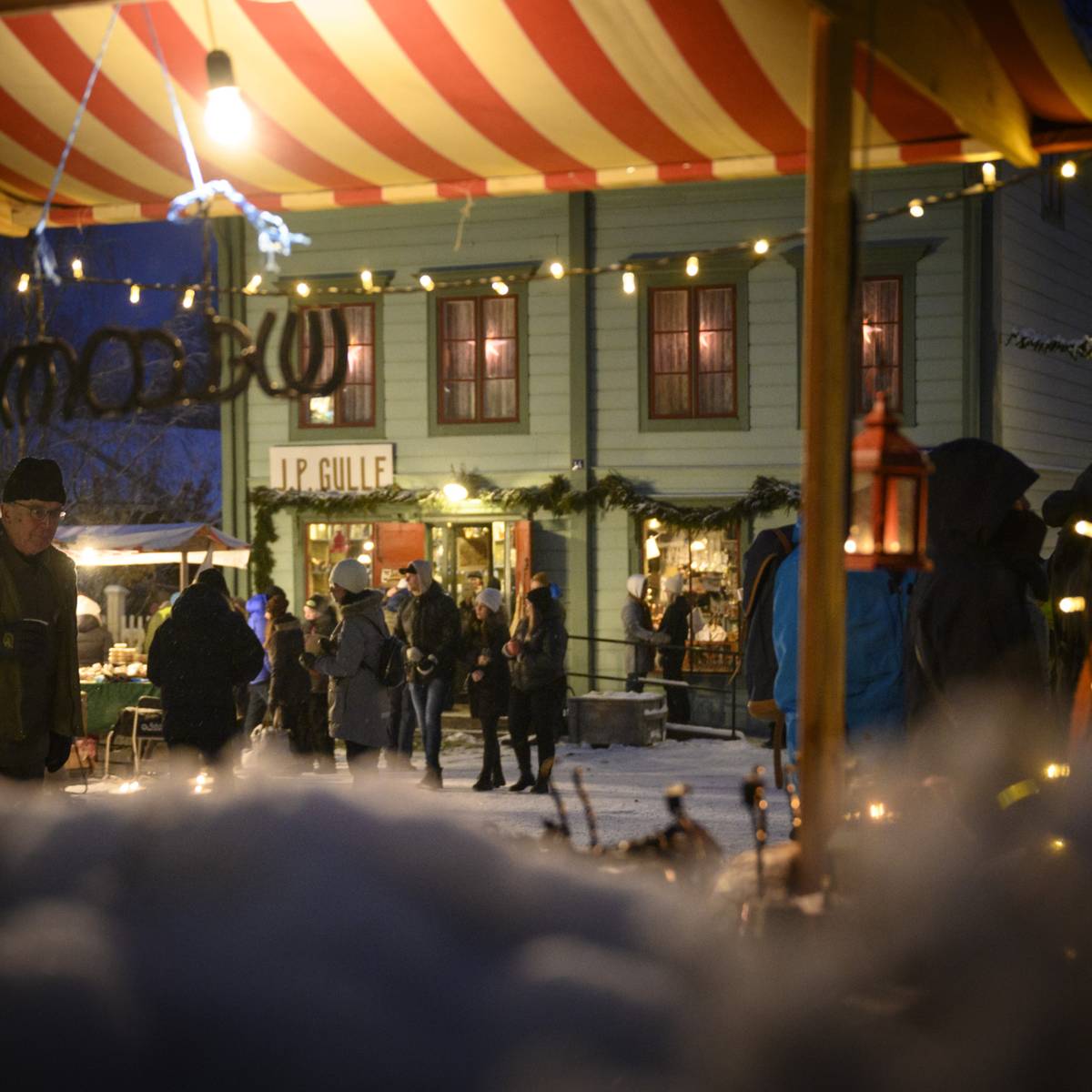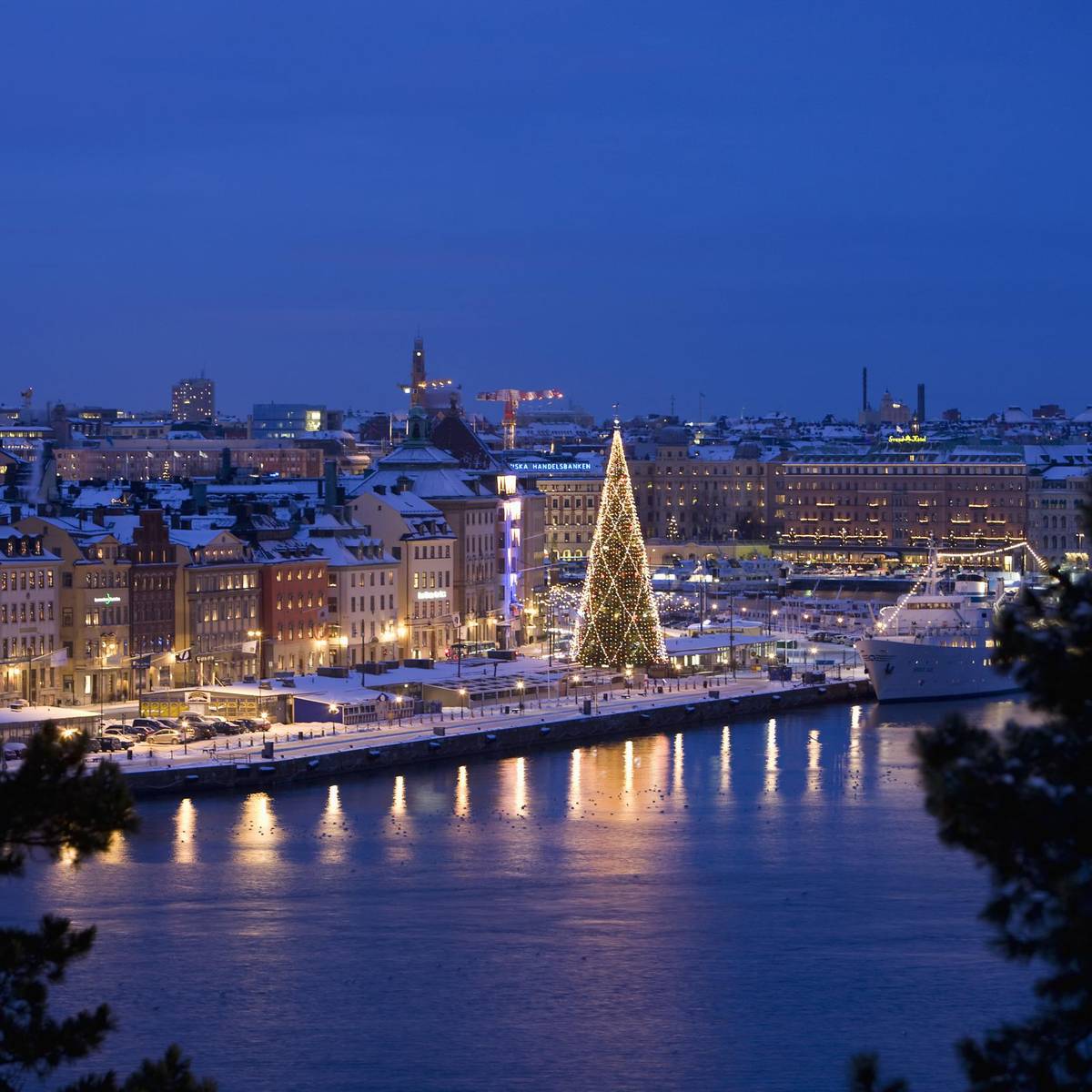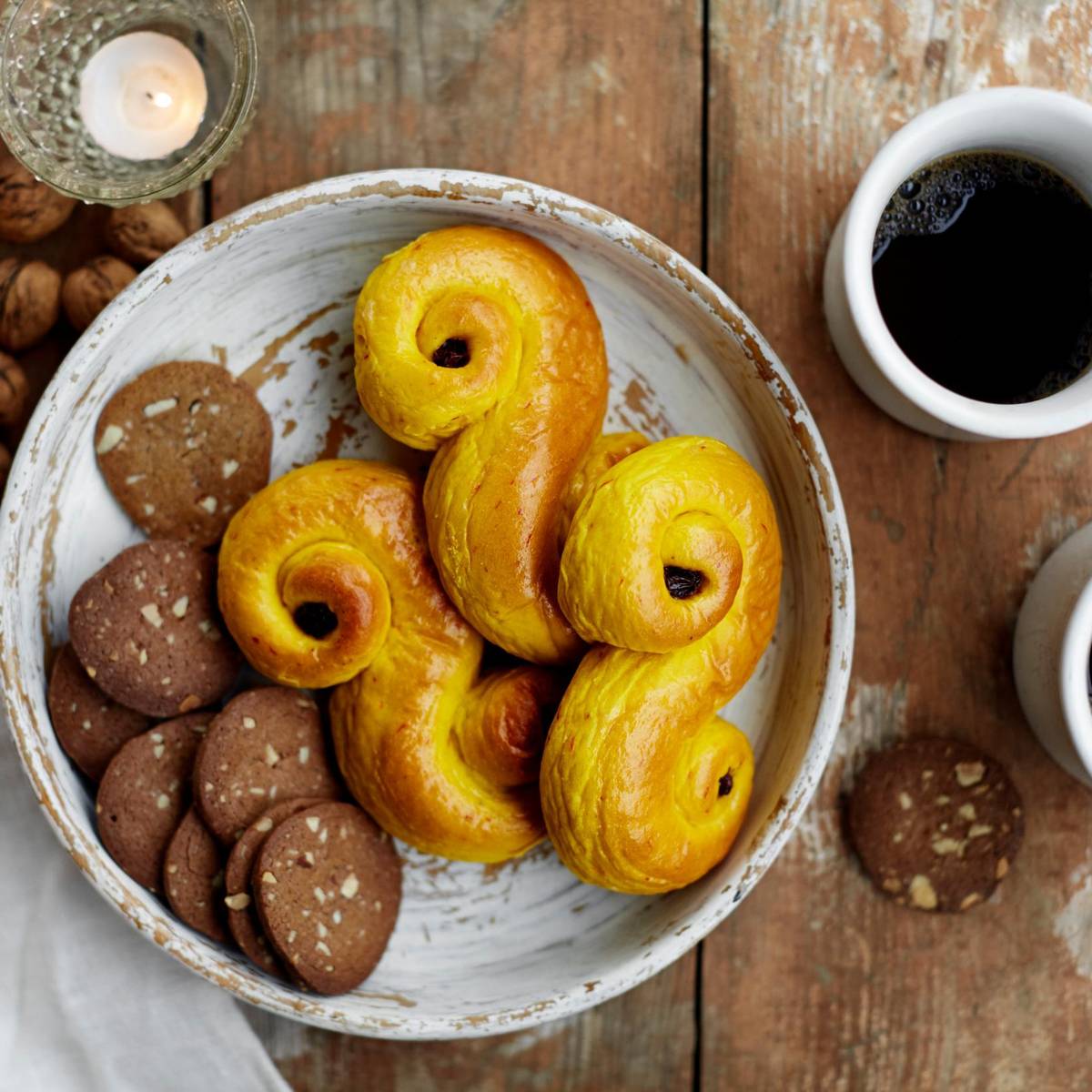The Lucia essentials – and what to expect on 13 December
If you visit Sweden in time to catch a Lucia celebration, you’ll be able to experience it at various places, such as churches, town halls, and even restaurants (as well as on TV and radio). According to tradition, Lucia appears before dawn; however, for practical reasons, many events are held at dusk. Don’t be surprised if the Swede next to you joins in with the choir – most Swedes know the main Lucia song, “Sankta Lucia”, off by heart.
Leading the procession, Lucia is trailed by handmaidens (‘tärnor’), star boys (‘stjärngossar’) and gingerbread men (‘pepparkaksgubbar’). If children are participating in the procession, they may choose to be dressed as Christmas elves ('tomtenissar'). As for each group’s attire, Lucia’s defining feature is the lit-up wreath on the top of her head. Traditionally, real candles were used, but for safety reasons they’ve been replaced by battery-powered ones – and the same goes for those carried by the handmaidens, who typically wear glitter or a wreath (without candles) in their hair and glitter or a decorative red ribbon around the waist. Star boys wear all-white – just like Lucia and the handmaidens – with cone-like hats and star-adorned sticks. The lantern-carrying gingerbread men sport full gingerbread costumes, replete with white icing – you’ll find these in many Swedish retailers.
As well as being the bearer of light, Lucia’s offering of treats is just as key. She has been immortalised carrying a tray of fika by several iconic Swedish artists, such as Carl Larsson. The eats are gingerbread biscuits and an S-shaped saffron bun called “Lussekatt” – a treat almost as classic as the cinnamon bun. Many Swedes would find it sacrilege to eat a Lussekatt at any other time than Lucia and the weeks leading up to Christmas. To drink, you’ll sip little cups of “glögg” (mulled wine), served with almonds and raisins. Coffee was served traditionally, and it’s still an option.












